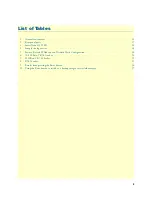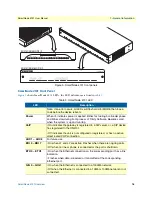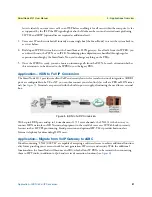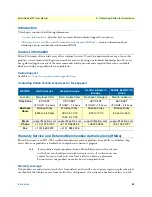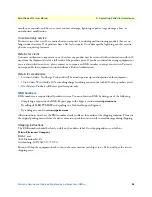
Application—ISDN to Full IP Conversion
21
SmartNode 4131 User Manual
2
• Applications Overview
latter is ideal if you want to test calls to an ITSP before enabling it for all users within the enterprise. As far
as supported by the ITSP, the SIP signaling but also the Media can be sent and received encrypted using
SIP TLS and SRTP (optional license required at additional cost).
3.
Voice over IP can be switched off instantly on one single box (the SmartNode) to revert the system back to
as it was before.
4.
Build up an IP PBX system that uses the SmartNode as PSTN gateway. For all calls from this IP PBX, you
can direct them to the PSTN or to ITSPs. Numbering plan adaptations are handled through regular
expression matching by the SmartNode. No need to change anything on the PBXs.
5.
Once the IP PBX is ready, you can choose on incoming calls from the PSTN, for each extension whether
this extension is to be directed to the IP PBX or on the legacy PBX.
Application—ISDN to Full IP Conversion
The SmartNode 4131 provides excellent VoIP and security features for seamless network integration. All BRI
ports are configurable to be TE or NT, you can thus connect your telco line(s) as well as a PBX or ISDN termi-
nals (see
). Terminals are powered with the built-in power supply, eliminating the need for an external
box
.
Figure 5. ISDN to Full IP Conversion
With up to 8 BRI ports and up to 16 simultaneous G.711 voice channels, the SN4131 is the best way to
connect ISDN networks or ISDN terminal equipment to the world of voice over IP. With built-in security
features such as HTTPS provisioning, Fraud protection and optional SIP-TLS it provides business-class
Internet telephony for demanding ISDN users.
Application—Migrate from VoIP Gateway to eSBC
Models containing “SN4131/2ETH” are capable of accepting a software license to achieve additional function-
ality future proofing your voice network for next generation SIP services and security. With the additional
functionalities the SmartNode will become an eSBC, which allows IP PBX`s to be secured when connecting
them to SIP Trunks, in addition to QoS and service demarcation functions (see
).


